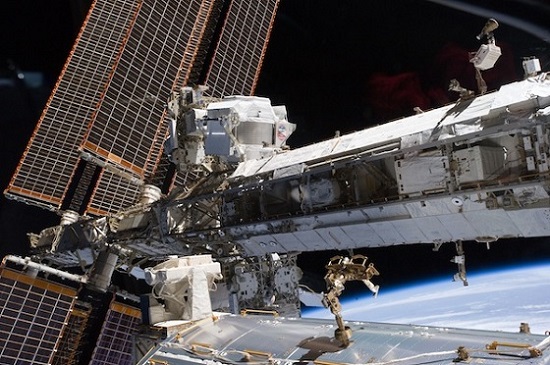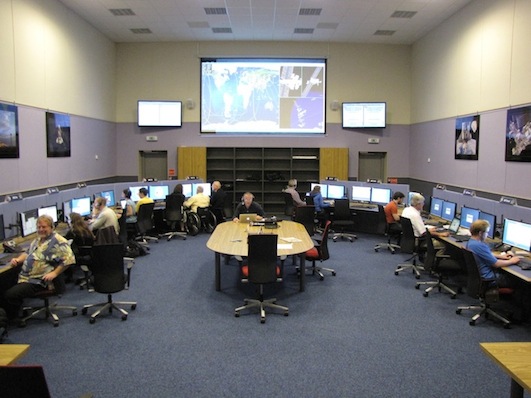AMS aims to tackle the biggest puzzles of our universe:
Does the Universe consist exclusively of matter, or are there stars made of antimatter as suggested by the theory of the Big Bang?
What is the nature of dark matter which constitutes the majority of the mass of the Universe?
Are there unknown forms of matter on Earth as the hypothetical strangelets?
To answer these questions, the AMS experiment measures, outside the earth atmosphere, fluxes of cosmic rays of all types, in the range of energy of GeV to TeV, with high precision and high statistics.
The experiment will observe cosmic rays as long as the ISS is in operation, perhaps until 2028. Its performance allows to gain a factor in accuracy between one hundred and one thousand compared to previous measurements.
AMS is an international collaboration of 50 institutes from 16 countries. It is directed by Samuel C. C. Ting, Professor M.I.T., Nobel Prize in Physics. Two French laboratories are involved: LAPP in Annecy and the LPSC in Grenoble.

AMS on the international space station ISS
The International Space Station ISS is the biggest space project ever. It is the result of a collaboration between the US, Canada, Europe, Russia, and Japan. ISS measures 108 meters long and 76 meters wide, the equivalent of a football field and weighs about 500 tons. 3 to 6 astronauts live permanently aboard the station conducting numerous experiments taking place inside the habitable modules (microgravity experiments) or outside. They also study long life in space to prepare for future expeditions to Mars.
The web sites of NASA and ESA devoted to ISS allow people to have all the details of the project of the station and its progress, and even predict when this object is visible in the sky:
http://www.esa.int/Our_Activities/H...
This is one of the brightest objects in the sky, and a good pair of binoculars is sufficient to distinguish its structure.
The station is in orbit around the earth between 350 km and 420 km altitude, inclined 50 degrees to the equator, and does a full rotation of the planet in 91 minutes, which represents a speed of 27000 km/h.
AMS02 is attached to the ISS on a support specifically designed for this purpose. The space station provides the electrical power necessary for its operation, ie 2 kW. Telecommunications are made with an average bandwidth of 2 Mbit/sec. The data recorded by AMS are transmitted to the ground by the network of satellites linked to the station and are forwarded in real time by the NASA control center. The treatment of AMS data is hosted by CERN in Geneva. All the control and operation of the AMS control is done from the CERN center.
















